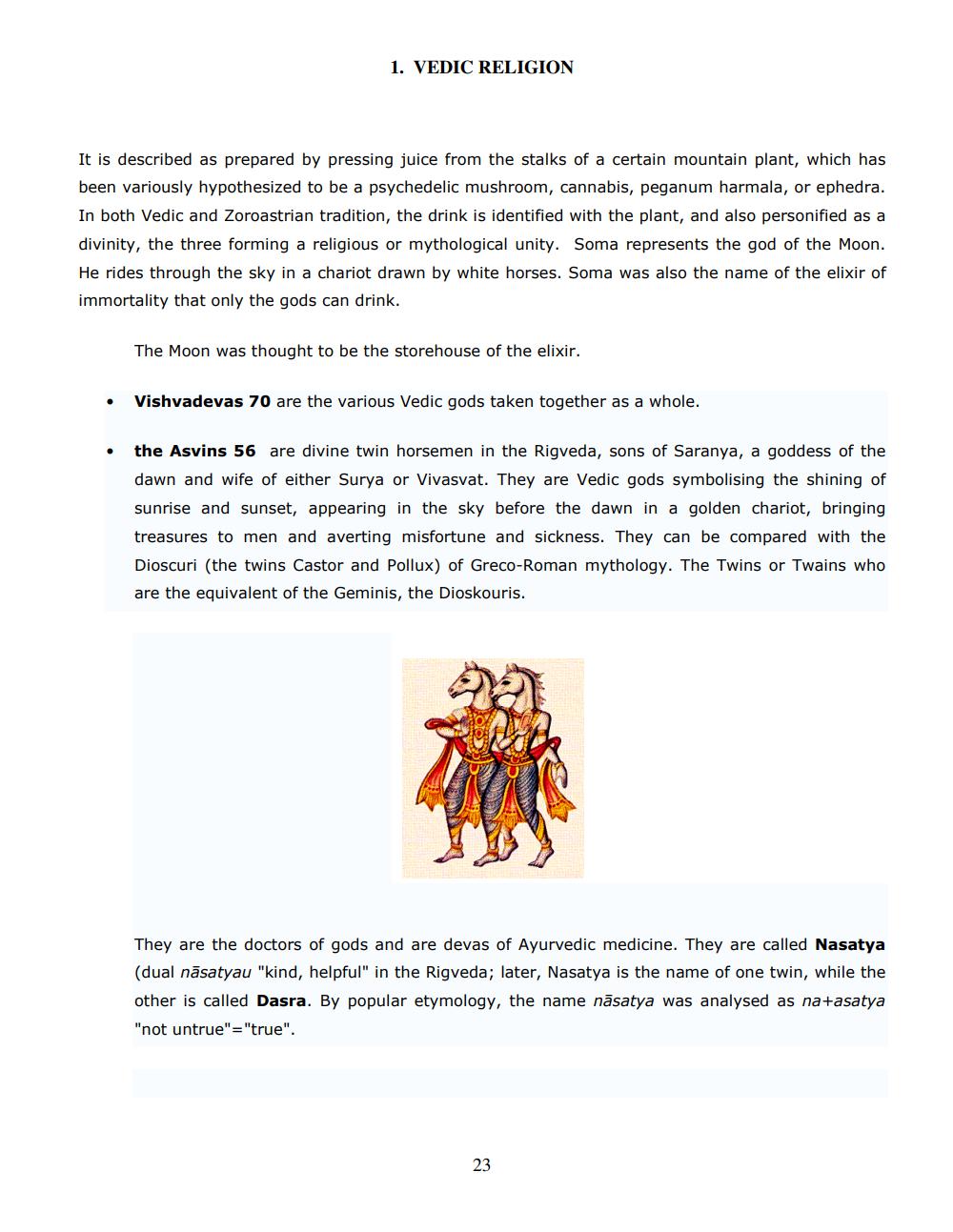________________
1. VEDIC RELIGION
It is described as prepared by pressing juice from the stalks of a certain mountain plant, which has been variously hypothesized to be a psychedelic mushroom, cannabis, peganum harmala, or ephedra. In both Vedic and Zoroastrian tradition, the drink is identified with the plant, and also personified as a divinity, the three forming a religious or mythological unity. Soma represents the god of the Moon. He rides through the sky in a chariot drawn by white horses. Soma was also the name of the elixir of immortality that only the gods can drink.
The Moon was thought to be the storehouse of the elixir.
•
Vishvadevas 70 are the various Vedic gods taken together as a whole.
the Asvins 56 are divine twin horsemen in the Rigveda, sons of Saranya, a goddess of the dawn and wife of either Surya or Vivasvat. They are Vedic gods symbolising the shining of sunrise and sunset, appearing in the sky before the dawn in a golden chariot, bringing treasures to men and averting misfortune and sickness. They can be compared with the Dioscuri (the twins Castor and Pollux) of Greco-Roman mythology. The Twins or Twains who are the equivalent of the Geminis, the Dioskouris.
They are the doctors of gods and are devas of Ayurvedic medicine. They are called Nasatya (dual nāsatyau "kind, helpful" in the Rigveda; later, Nasatya is the name of one twin, while the other is called Dasra. By popular etymology, the name nāsatya was analysed as na+asatya "not untrue"="true".




